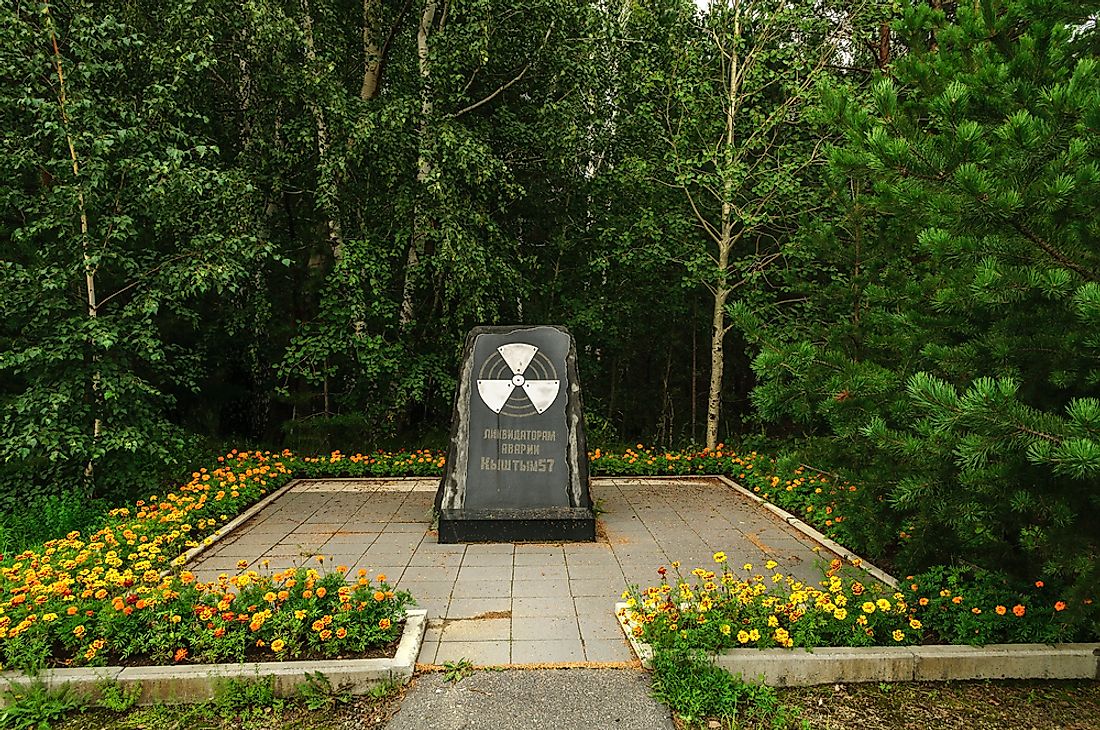What Was the Kyshtym Disaster?

The Kyshtym Disaster was a radioactive contamination accident that occurred on September 29, 1957, at a plutonium production plant in Ozyorsk, Chelyabinsk, Oblast, Russia. The accident took place at the Mayak Production Association, which is one of the largest nuclear facilities in Russia, and had been used by the Soviet Union for the production of nuclear energy and weapons. It is considered to be the third deadliest nuclear accident in history, after the Chernobyl (Ukranian SSR) and Fukushima (Japan) disasters.
Background
The creation of the Mayak nuclear plant dates back to the period immediately after end of the Second World War. Given that the United States had made significant advancements in the research and production of nuclear weapons, the Soviet Union felt the need to invest in a similar program. As a result, the Soviet Union quickly established the Mayak plutonium between 1945 and 1948. However, due to a lack of personnel with adequate expertise in nuclear physics, various safety concerns existed since the plant began to operate.
To deal with nuclear waste, the Soviet Union built a storage facility in 1953, which was 27 ft underground and included steel tanks on a concrete base. However, due to the nature of radioactivity, instances of overheating storage tanks were common and required the addition of a cooling system.
Explosion
On September 29, 1957, the cooling system of one of the storage tanks failed, and the rise in temperature led to the evaporation of dried waste. The tank eventually exploded, releasing waste, such as ammonium nitrate and acetates, into the air. The massive explosion had a force of between 70 and 100 tons of TNT, and although the blast itself did not cause immediate casualties, the release of radioactive waste polluted the air and water.
The effects became apparent about ten to eleven hours after the explosion, as a cloud containing radioactive materials could be seen traveling in a north-east direction. The cloud moved between 300 to 350 km from the site of the accident, and the fallout from them cloud resulted in the contamination of an area that was up to 20,000 km2.
Emergency Response and Aftermath
Since the nuclear research and production at the Mayak plant was conducted in secret, the areas and populations impacted by the Kyshtym Disaster were not immediately notified of the accident. In fact, an evacuation operation did not begin until one week later, which included the evacuation of approximately 10,000 people from 22 villages. Additionally, given the high level of secrecy surrounding Mayak, no reliable data about the number of casualties or radiation-induced illnesses has ever been released.
Information about the disaster began to emerge the following year, including reports in the western press that a nuclear plant had exploded, releasing radioactive waste into the surrounding areas. A newspaper from Vienna, Austria, Die Presse, gave initial details surrounding the incident on March 17, 1959. However, Russian agronomist, historian and dissident Zhores Medvedev released the most detailed account of the accident in 1976 in his publication, New Scientist. Nevertheless, the actual number of people impacted by the accident remains unknown.
Current Status
The radiation levels in Ozyorsk currently stand at an annual level of 0.1 mSv, which is considered to be harmless. However, the region remains contaminated with radioactive waste, and is therefore not safe for human settlement due to the risk of health and environmental concerns.











